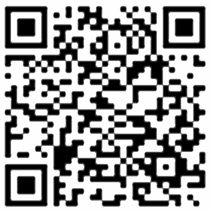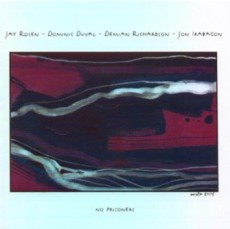
Daily Dose Of Jazz…
Jay Rosen was born November 20, 1961 in Philadelphia, Pennsylvania. At age 10, he became interested in jazz drumming after seeing Tony Williams perform with Sonny Rollins. He took drum lessons from Tracy Alexander, son of Mousey who would occasionally mentor the young musician. He would also briefly study with Barry Altschul.
Around age 18, Rosen became a professional musician, and played in a variety of settings that included studio sessions, weddings and cocktail lounges. In addition to playing jazz he is also adept at playing rock and roll, rhythm and blues, country and Brazilian music.
His recording career in improvised music began in the mid-1990s, when he recorded Split Personality with Mark Whitecage and Dominic Duval for GM Records. Jay has appeared on at least fifty CIMP albums and seven albums for Cadence Jazz Records.
Drummer Jay Rosen, associated with free improvisation, has performed with Joe McPhee and Dominic Duval in Trio X and joined Cosmosomatics, a quartet with saxophonists Sonny Simmons and Michael Marcus and bassist William Parker.
More Posts: drums
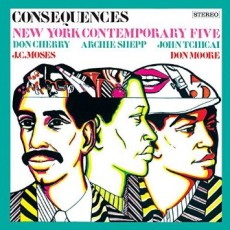
Daily Dose Of Jazz…
J. C. Moses was born in Pittsburgh, Pennsylvania on October 18, 1936 and was related to pianist Jimmy Golden and trumpeter Clifford Thornton. Somewhat of a mystery figure in jazz history, he was a very versatile and for a time greatly in-demand drummer who played in settings ranging from mainstream to free jazz.
Moses first gained the attention of the jazz world in the early 1960s, when he recorded with Clifford Jordan, Kenny Dorham and Eric Dolphy. As a member of the New York Contemporary Five with Archie Shepp, John Tchicai and Don Cherry, he toured Scandinavia in 1963 and recorded in Denmark. Returning to New York the following year, J. C. recorded with Bud Powell on the album The Return of Bud Powell, was with the New York Art Quartet, then was with an early version of Charles Lloyd’s Quartet and spent two years with Rahsaan Roland Kirk.
During this period drummer J. C. Moses also worked with Archie Shepp, Andrew Hill and Sam Rivers. By 1969 he played regularly in Copenhagen as the house drummer at the Montmartre Club. However, erratic health forced him to cut back on his activities in the early 1970s and he returned to Pittsburgh. Unfortunately he never led his own record date but he would occasionally played with Nathan Davis and Eric Kloss before his untimely death in 1977.
More Posts: drums
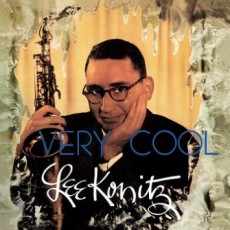
Daily Dose Of Jazz…
Lee Konitz was born October 13, 1927 in Chicago, Illinois. At age 11, he received his first instrument, a clarinet, but later dropped the instrument in favor of the tenor saxophone. He eventually moved from tenor to alto. His greatest influences at the time were the swing big bands, in particular Benny Goodman, who prompted him to take up clarinet. However, on the saxophone he was improvising before ever learning to play any standards.[1]
Konitz began his professional career in 1945 with the Teddy Powell band replacing Charlie Ventura. A month later the band parted ways and between 1945 and 1947 he performed off and on with Jerry Wald. In 1946 he first met pianist Lennie Tristano, working in a small cocktail bar with him. He went on to work through the Forties with Claude Thornhill, Gil Evans and Gerry Mulligan.
He played with Miles Davis on a couple of gigs in 1949 and recorded with him on the album The Birth of the Cool. Though his presence in the group angered some unemployed black musicians Davis rebuffed their criticisms. The same year his debut as leader also came in a session that would be titled Subconscious-Lee, release some six years later.
By the early 1950s, Lee recorded and toured with Stan Kenton, but through the decade he recorded as a leader. In 1961, he teamed up with Elvin Jones and Sonny Dallas to record a series of standards on Motion, followed by duets project utilizing sax and trombone, two saxophones, saxophone and violinist Ray Nance or guitarist Jim Hall..
In 1971 Konitz contributed to the film score for Desperate Characters, performed at the Woodstock Jazz Festival, has performed or recorded with Dave Brubeck, Ornette Coleman, Charles Mingus, Gerry Mulligan, Elvin Jones, Brad Mehldau, Charlie Haden, Grace Kelly, Gary Peacock, Bill Frisell, Joey Baron and Paul Motian, among numerous others.
In addition to his bebop and cool jazz releases alto saxophonist Lee Konitz has become more experimental as he has grown older, has released a number of free and avant-garde jazz albums , all of which have amassed over some one hundred and twenty to date as a leader. He has recorded some fifty albums as a sideman and continues to perform and tour, often playing alongside many far younger musicians.
Alto saxophonist Lee Konitz died during the COVID-19 pandemic from complications brought on by the disease on April 15, 2020.
More Posts: saxophone
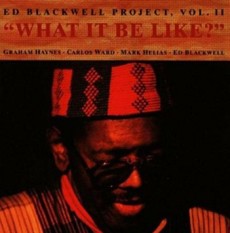
Daily Dose Of Jazz…
Edward Joseph Blackwell was born on October 10, 1929 in New Orleans, Louisiana. His drumming style was greatly influenced by the second line parade music. His early career began in his hometown in the 1950s playing in a bebop quintet that included pianist Ellis Marsalis and clarinetist Alvin Battiste. For a brief stint he toured with Ray Charles.
Blackwell first came to national attention as the drummer with Ornette Coleman’s quartet around 1960, when he took over for Billy Higgins in the quartet’s legendary stand at the Five Spot in New York City. Known as one of the great innovators of free jazz of the 1960s, fusing New Orleans and African rhythms with bebop.
In the 1970s and 1980s Blackwell toured and recorded extensively with fellow Ornette’s Quartet veterans Don Cherry, Charlie Haden and Dewey Redman in the Old and New Dreams Quartet. By the late 1970s he became an Artist-in-Residence at Wesleyan University in Middletown, Connecticut and was a beloved figure on the Wesleyan Campus until he died.
In 1981 he performed at the Woodstock Jazz Festival, held in celebration of the tenth anniversary of the Creative Music Studio. The Ed Blackwell Project was comprised of members Mark Helias on bass, alto saxophonist and flautist Carlos Ward and Graham Haynes on cornet. He played with Ray Anderson, Karl Berger, Jane Ira Bloom, David Bond, Charles Brackeen, Anthony Braxton, Marlon Brown, Steve Coleman, Anthony Davis, Jane Cortez, Stanley Cowell, Eric Dolphy, Albert Heath, Clifford Jordan, Joe Lovano, Yoko Ono, David Murray, Hilton Ruiz and numerous others.
After years of kidney problems, drummer Ed Blackwell passed away on October 7, 1992. The following year he was inducted into the Down Beat Jazz Hall of Fame.
More Posts: drums
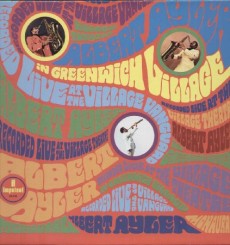
Daily Dose Of Jazz…
Donald Ayler was born in Cleveland Heights, Ohio on October 5, 1942, the younger brother of saxophonist Albert Ayler. He took up the trumpet as a child and went on to work with his brother in the mid-1960s but in 1967 had a nervous breakdown, which affected his brother’s life as well.
In 1970 his brother’s death affected him deeply. After that he worked with a septet in Florence but never led a recording session of his own. To this day, Donald remains best known for his jazz performance and recordings with his brother Albert.
Trumpeter Donald Ayler, who played in the free, avant-garde and mainstream genres of jazz, suffered a sudden heart attack on Sunday October 21, 2007, and passed away at home in Northfield, Ohio.
More Posts: trumpet


